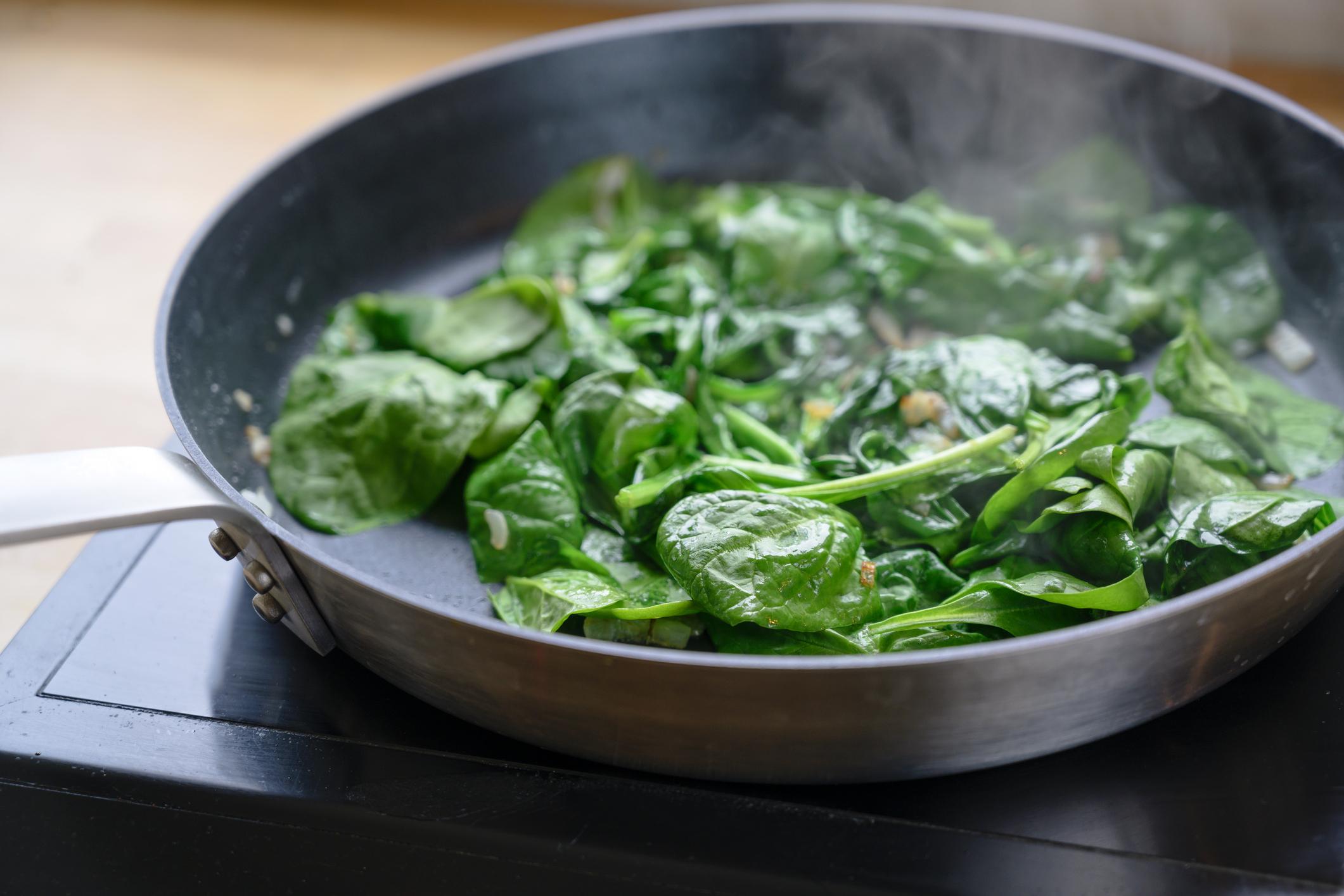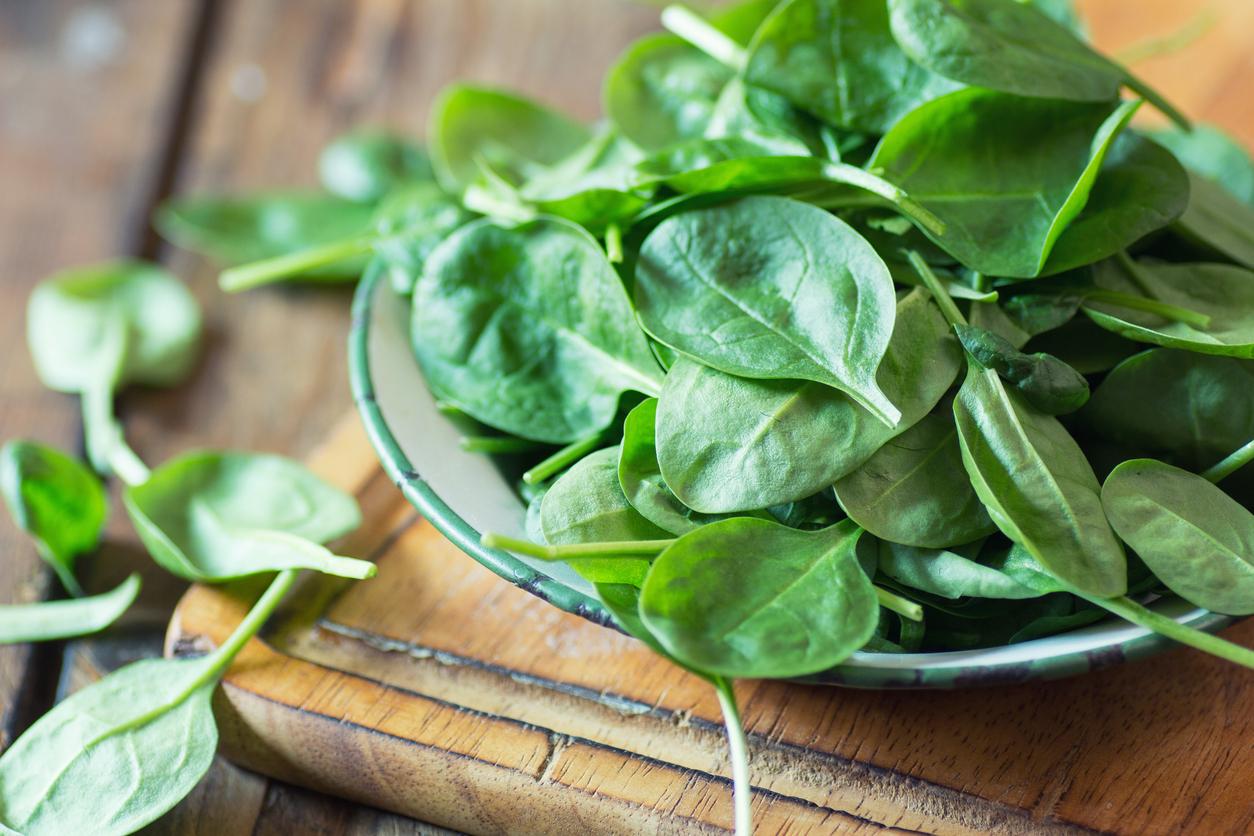
Spinach is tasty and healthy, but there are many persistent myths about this vegetable. Does this green treat contain as much iron as claimed? Can you reheat a leftover spinach or not? And what about the combination of fish and spinach?
1. Can you reheat spinach?
Yes that is allowed. It is important that you let leftover spinach cool quickly after the first preparation and store it in the refrigerator at 4 to 7 degrees Celsius. For example, bacteria that produce the potentially harmful substance nitrite have less chance to grow. Do not keep leftovers of nitrate-rich vegetables in the refrigerator for more than 2 days and do not give them to children who are less than 6 months old. You can also freeze spinach.
2. Can you eat fish with spinach?
Yes that is allowed. It is fine to combine nitrate-rich vegetables such as spinach or lettuce with fish or shellfish, such as mussels. This can be done several times a week. The Nutrition Center previously advised not to combine nitrate-rich vegetables, such as spinach, endive or beetroot, with fish, crustaceans and shellfish (with the exception of salmon and mackerel). This combination can create nitrosamines. Nitrosamines have been associated with the formation of (stomach) cancer in animal research. After recent studies, we know that eating these nitrate-rich vegetables poses no health risk. It is therefore no problem to combine fish with nitrate-rich vegetables. It also does not matter how many times a week you eat nitrate-rich vegetables.
3. How do you prevent stiff ‘spinach teeth’?
Stiff teeth after eating spinach is due to the oxalic acid in this vegetable. Purslane and rhubarb, for example, also give rough teeth when eating. Oxalic acid reacts quickly to calcium and you can feel it in your teeth. Incidentally, the acid also binds to calcium in the food; your body can no longer use that calcium.
You can prevent rough teeth by binding the oxalic acid during cooking with a little chalk (ordinary school chalk is fine). It reduces stiff teeth, but does affect the taste of the spinach slightly. You can also add a little milk or cream while cooking; that helps against the rough feeling and also counteracts the descaling effect. That is also the reason that a lot of frozen spinach contains cream; the so-called spinach à la crème. Serving a hard-boiled egg with the spinach also counteracts the stiff feeling.
4. Is there really that much iron in spinach?
Fresh spinach contains 2.75 mg of iron per 100 grams. Cooked spinach contains 3.57 mg per 100 grams. This means that the vegetable does indeed contain a relatively large amount of iron; about the same as beef. However, when we look at how this iron is absorbed into the body, it is disappointing. Iron is present in our diet in two forms: heme iron and non-heme iron. Heme iron is mainly found in meat and fish and is easily absorbed by our body. Vegetables, fruit, bread, potatoes and grain products mainly contain non-heme iron. And this variant is less efficiently absorbed by our body. The aforementioned oxalic acid in spinach makes absorption even more difficult, because it binds to iron.
That the iron content of spinach is often overestimated is because there was once a mistake in determining it. German scientists analyzed the vegetable in 1937 and found that its iron content was ten times lower than previously believed. How this could have happened is unknown. One theory is that dried spinach was used in the initial analysis. Another is that the previous researcher had moved the decimal point one place too far to the right, which resulted in the iron content being ten times higher. Incidentally, recent research shows that eating a plate of spinach does ensure that muscles work more efficiently.
Spinach is a healthy vegetable anyway. In addition to iron, spinach is rich in potassium, calcium, phosphorus and magnesium and in vitamin A, vitamin E, folic acid and antioxidants such as lutein and zeaxanthin.
5. Spinach shrinks quite a bit during cooking. How much do I need per person?
Spinach contains a lot of moisture, which evaporates during preparation. You are left with about a quarter to a third of the weight and it shrinks much more in volume. For 200 grams of cooked spinach you can therefore count 350-400 grams of raw spinach per person.

















